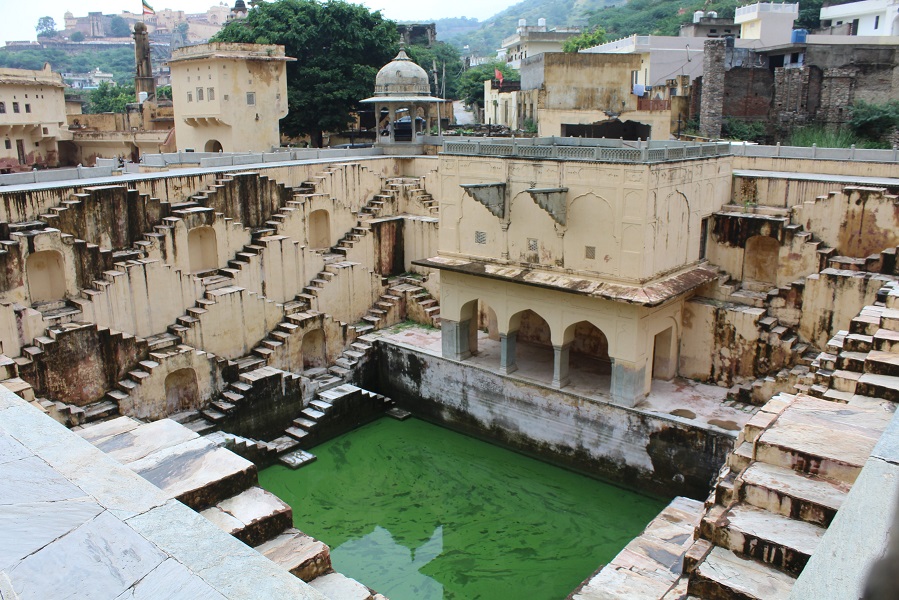30 Nov 2024

Deborah Hart
Co-founder of ClimActs & CLIMARTE
Marrying ancient wisdom with modern technology and building codes presents many challenges and opportunities.

The discourse around climate resilience in architecture is often geared towards futuristic or modern designs. However, ancient history is rich with architectural marvels that were crafted with an intrinsic understanding of their environment.
Revisiting the ancient practices could provide invaluable lessons for contemporary design. This article delves into the principles of climate resilience embedded in ancient architecture and explores how these age-old strategies can inspire modern design.
Historical Background
Across the sands of time, different civilisations have borne witness to architectural practices that were harmoniously aligned with the climate. In the scorching heat of Mesopotamia, the cradle of civilisation, to the fertile plains of the Indus Valley, ancient builders exhibited a profound understanding of their local climates and environmental challenges.
Their architectural designs were not mere expressions of cultural aesthetics; they were pragmatic responses to the climate, ensuring the sustainability and habitability of structures across generations.
Key Principles of Climate Resilience in Ancient Architecture
1. Material Selection
The genius of ancient architecture often lay in its simplicity. Utilising locally sourced materials, ancient builders demonstrated an early form of sustainable design. For instance, the use of mud-brick in Mesopotamia or limestone in Egypt showcased how locally available materials could be employed to great effect.
The choice of materials often had a direct correlation with the climate. They offered durability against local weather conditions, thus standing the test of time, while also providing natural insulation or cooling.
2. Passive Cooling and Heating
The ancients understood the merit of passive cooling and heating long before these terms found a place in the modern architectural lexicon. Structures were designed to maximise natural ventilation, a practice that not only conserved energy but also enhanced the comfort of dwellers.
For example, the orientation of buildings, the placement of windows and the design of courtyards in ancient Persian and Roman architecture facilitated airflow and created cooler indoor climates during scorching summers.
3. Water Management
Water was managed with a reverence and intelligence that modern cities could learn much from. Ancient civilisations developed sophisticated systems for rainwater harvesting, drainage, and flood control that were crucial for their survival and prosperity.
The stepped wells of India and the qanat system of Persia reflect a deep understanding of water conservation and management, by collecting rainwater which could be used by the entire village. This was vital in most arid regions.

Case Studies
Various ancient structures serve as living testaments to climate-resilient architecture. The Great Zimbabwe, a medieval city built of stone without mortar, exemplifies a design resilient to tropical weather. Similarly, the ancient cliff dwellings of Mesa Verde in Colorado showcase how natural cave formations could be utilised to create shelter, maintaining a stable indoor temperature throughout the year.
These case studies, among many others, underline the inherent climate resilience ingrained in ancient architectural practices.
Lessons for Modern Design
The transition to a more climate-resilient architectural paradigm necessitates a blend of the old and the new. Modern design can draw immense inspiration from ancient practices. The principles of material selection, passive cooling and heating, and water management are as relevant today as they were centuries ago.
Incorporating these principles could lead to designs that are not only resilient to changing climate conditions but are also sustainable and in harmony with nature.

Challenges and Opportunities
Marrying ancient wisdom with modern technology and building codes presents many challenges and opportunities. While regulatory and technological hurdles exist, the opportunity to foster a new era of climate-resilient design is exhilarating.
Investments in research, education, and policy advocacy are crucial to revive the timeless wisdom encapsulated in ancient architecture, propelling modern design towards a sustainable and climate-resilient future.
The narrative of climate resilience in ancient architecture is a journey back in time, offering a mirror to the future. It beckons architects, designers, and policymakers to delve into the past to craft a sustainable architectural ethos for the modern world.
As the climate crisis intensifies, the lessons from our architectural ancestry could well be the lodestar guiding us towards a harmonious coexistence with nature.
Comment
Reply